Porsche fiends, you have a new god. The updated 2026 911 Turbo S has arrived. While it might look mostly the same, there’s a host of changes underneath that promise even face-meltier acceleration, lower lap times, and somehow, more comfort, too.
The biggest change: the Turbo S is now a hybrid.
The system, which will come standard on every Turbo S going forward, uses a lot of the same tech seen on the Carrera GTS T-Hybrid, the first-ever hybrid 911, launched last year. Except this time, there are two turbos instead of one. Also, the Turbo S gets Porsche’s ultra-fancy electro-hydraulic suspension system, meaning it should ride better than ever.
If You Thought The 911 Turbo Was Complex Before…
Let’s talk about that extra turbski first. Before it was revealed, I almost expected this new Turbo to have a more juiced version of the GTS’s single-turbo powertrain, perhaps with more displacement from the flat-six engine. But Porsche decided to go all-out here, keeping the twin-turbo architecture from the previous Turbo S, albeit with two “eTurbos” instead of one.
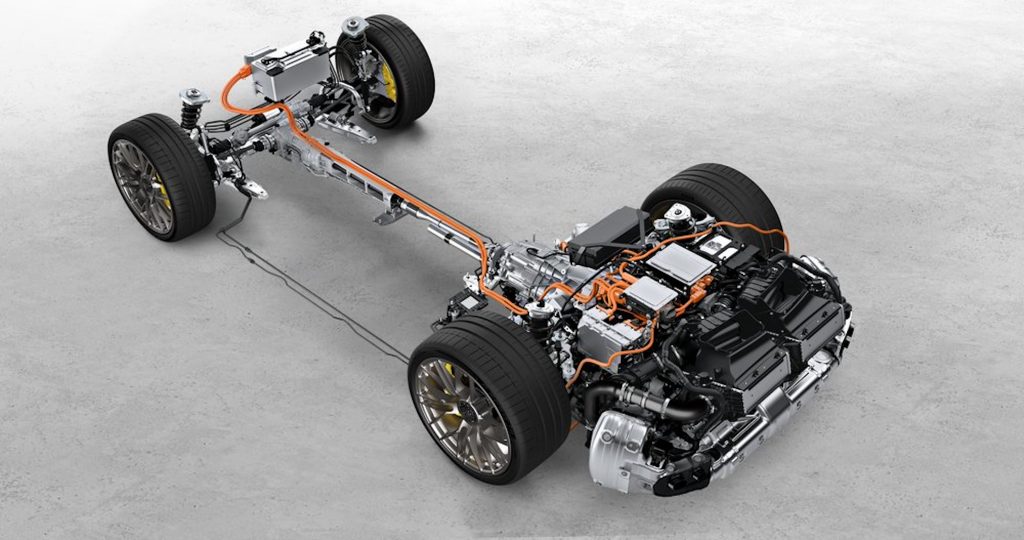
The eTurbo thing is incredibly cool, if a bit complex. In addition to the electric motor between the engine and the gearbox, each turbo has an electric motor of its own to spin up the turbine housing, even if the engine isn’t under load. It effectively eliminates lag by generating boost as soon as the driver hits the go-pedal. Both the turbos and the e-motor are supplied by a 1.9-kWh battery pack mounted ahead of the cabin.
In the Turbo S, that means 701 horsepower 590 pound-feet of combined oomph. That’s 61 more horsies than before, though strangely, torque hasn’t changed at all, despite all the extra electric thrust. The company claims a 0-60 time of 2.4 seconds—0.2 seconds quicker than the purely ICE-powered model. I tend to ignore these quoted acceleration times from Porsche, though, since its cars are usually way quicker in real-life tests. Car and Driver managed to get a 0-60 time of just 2.2 seconds from a last-gen Turbo S. This one should be even quicker than that.
What Else Is New?
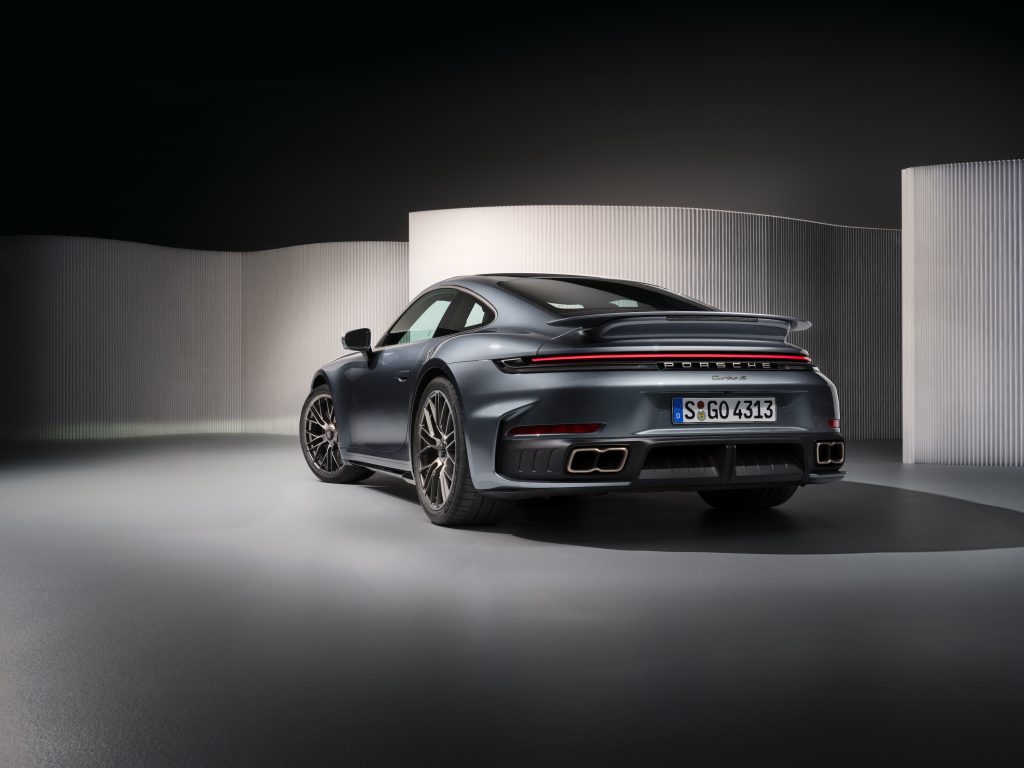
Because the 2026 Turbo S runs its hybrid tech on a 400-volt system, it has enough juice to power Porsche’s fancy electro-hydraulically controlled Porsche Dynamic Chassis Control system (ehPDCC for short, if you consider a six-letter acronym short). The system, which first appeared on the Panamera, works via a hydraulic pump connected to each damper, which can vary the pressure within the shock in a quick and precise manner. Because the system is all cross-connected, all the dampers can work together to eliminate dive, roll, and yaw. The result is more comfort at the soft end, and greater agility when the dampers are stiffened up, at least according to Porsche.
All this stuff adds weight, though. Porsche says this new Turbo S is 180 pounds heavier than before, for a new total of 3,829 pounds in coupe form. Going by modern sports car standards, that’s still pretty light. Still, the company’s chucked 10-millimeter-wider tires out back to keep the heft in check, and added new pads to its carbon-ceramic brakes. The rear discs are also 20 mm larger in diameter.
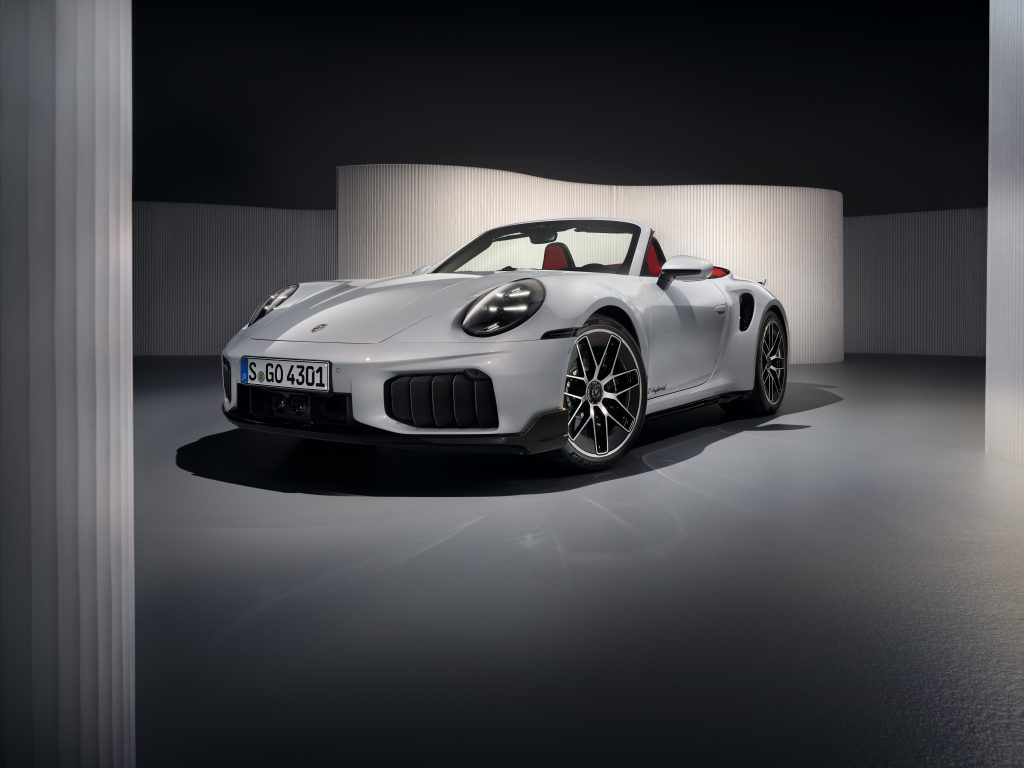
Even with the added poundage, Porsche says the new Turbo S is quicker around a race track. To prove it, the company took the car to the Nürburgring, where it managed to throw down a time of 7 minutes, three seconds—roughly 14 seconds quicker than the outgoing model. Nürburgring times are mostly useless for comparing different cars, but for comparing versions of the same car, I appreciate the perspective. Even if the weather likely wasn’t the same and tire tech has improved since that first time was set, 14 seconds is a big improvement.
How About The Looks?

The 2026 Porsche 911 Turbo S adopts many of the same changes the standard Carrera range and the GT3 got last year. The taillights have been reworked, while the front end receives the same vertical slats as the GTS. The slats can open or close depending on the needs of the cooling system, and in conjunction with the active front wing, the active rear wing, and the movable diffuser, they can reduce drag by up to 10 percent versus the last Turbo S. Thanks to rain sensors in the wheel well, the front slats will even know to close while it’s raining so as not to soak the brake rotors with too much water. Clever stuff.
Look closely, and you’ll see stuff like the Porsche crest badges, the “Turbo S” lettering, and slats above the engine grille are colored in a bronzy-grey color called Turbonite. The color was dreamed up by Porsche last year specifically for use on the company’s Turbo (with a capital T) models, to further differentiate them from the rest of the lineup. Seeing as how virtually every gas-powered car in the company’s lineup uses a turbocharger, it makes sense to give the big boys in the lineup some extra pizazz.
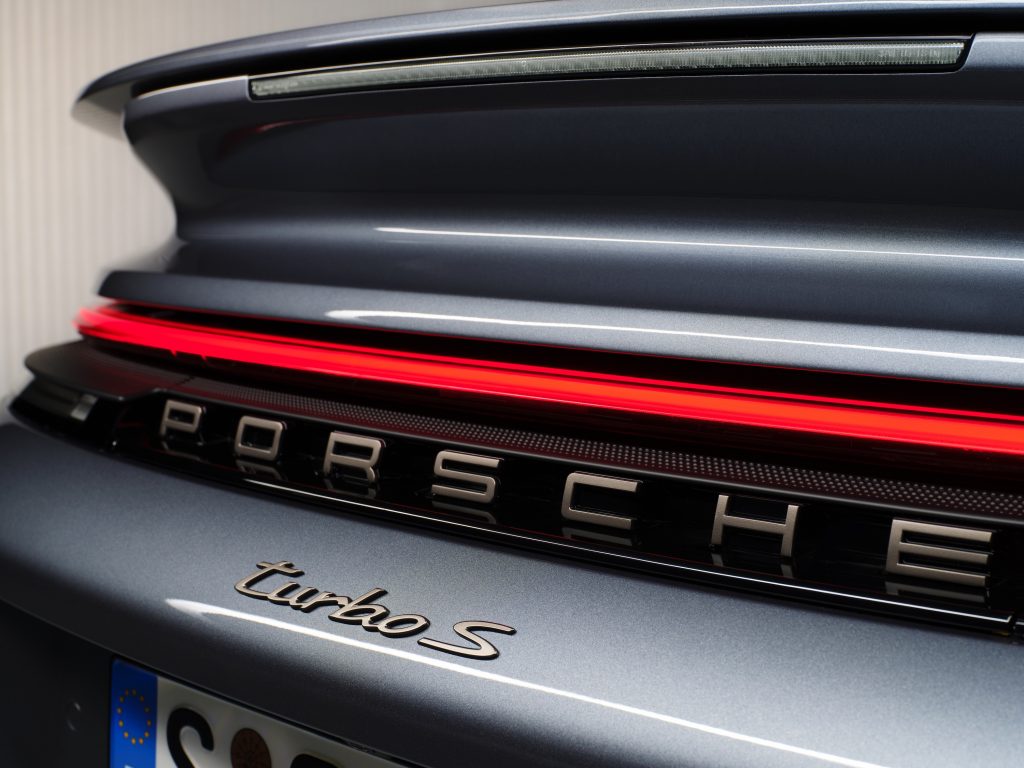
There’s a bevy of carbon fiber options to spice up the Turbo S’s looks, as is the case with virtually every car in this segment nowadays. The roof, wheel inserts, and the air intake trim can all be optioned in the stuff. For the first time ever, you can even option the windshield wiper arms in carbon fiber. In extremely Porsche fashion, the company is quick to point out that the carbon arms are 50 percent lighter than the standard pieces. Very useful on a car that weighs nearly two tons.
What’s The Damage?
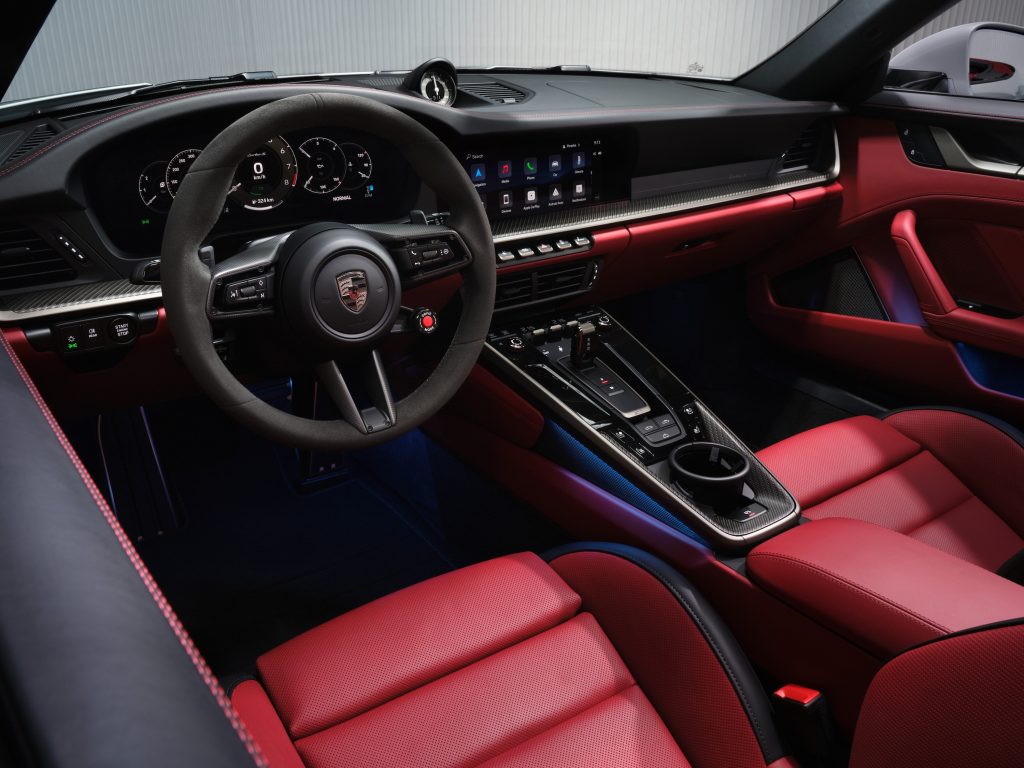
While it’s still less expensive than its more exotic competitors, the 911 Turbo S hybrid is far from cheap. All the extra equipment tacked on for 2026 has ballooned its starting price to $272,650 for the coupe and $286,650 for the Cabriolet—increases of $31,955 and $14,155 over the last Turbo S, respectively.
This is the part where I usually say, “You’re probably better off buying a base 911 for way cheaper!” But even the base 911 Carrera is now a $122,095 affair. Truth is, there hasn’t been a “cheap” 911 from Porsche in nearly a decade.

Curiously, Porsche hasn’t said a word on the status of the regular 911 Turbo (without the S at the end). In the past, it’s gotten the same body and much of the same equipment, minus the carbon-ceramics and a few horsepower. It’s unclear whether the normal Turbo will also be a hybrid, or if it’ll stay ICE only (if it returns to production at all). Given the always-high demand for new 911s, I don’t see a reason to kill it off. Offering a new Turbo without the hybrid tech could be a way to reach buyers who want the capital T model, but don’t want the extra weight or complexity. Porsche: If you need some consulting, give me a call.

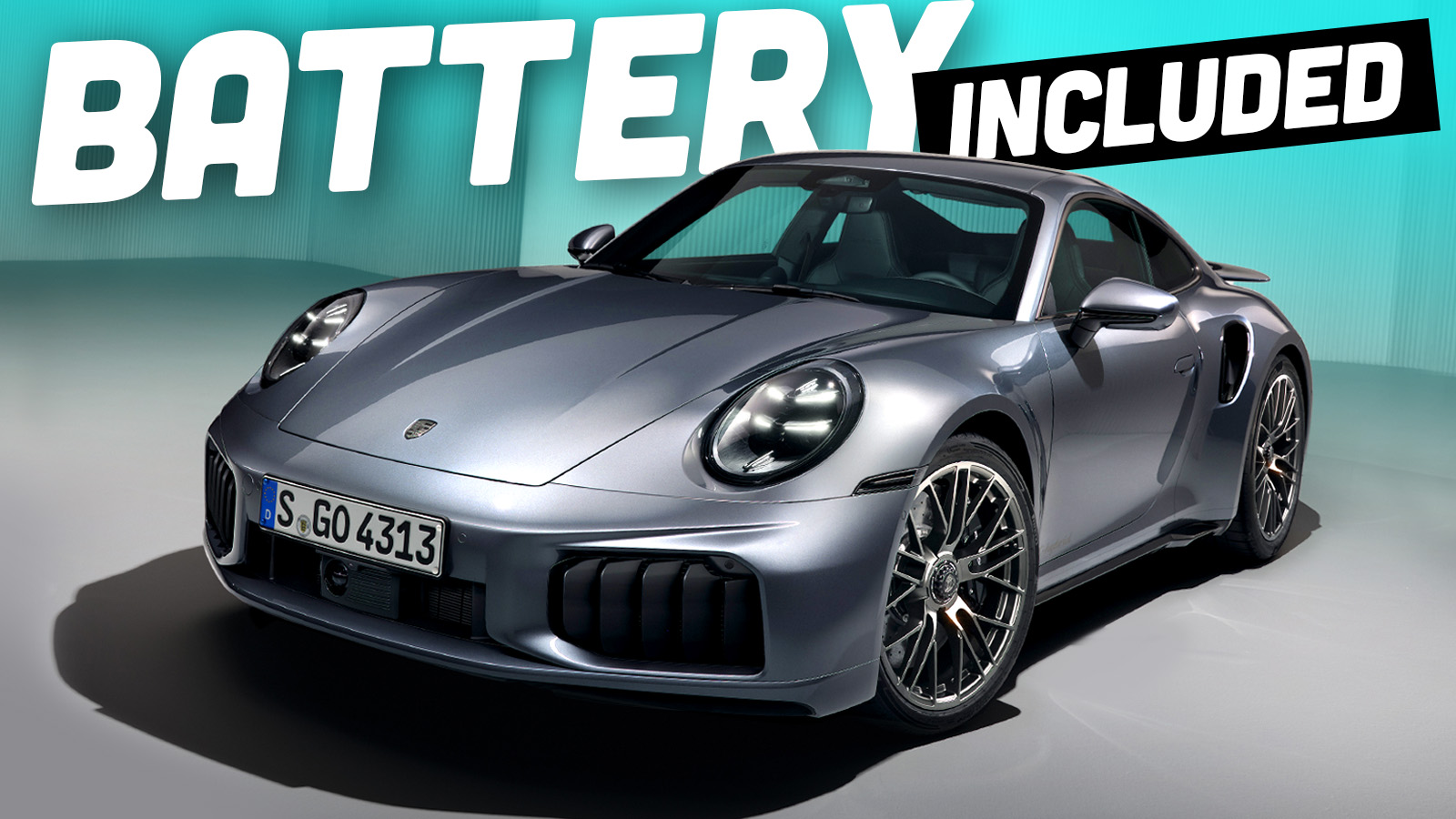




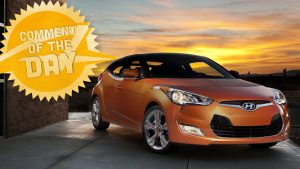


So Porsche no Matter if you add to it or take away from it it costs more money? If they put the same hybrid setup in a boxer will they intentionally make the Boxer slower? Will we continue to see the same design year after year and the drivetrain change as frequently as a Ram truck but the price higher every year? This is what I want to know about Porcha
Meh
Never thought I’d see a 911 Turbo with Hellcat power but here we are. The tech is really cool and this is probably a sweet GT car but I think if I was going to spend that much on a GT, I’m getting an Aston Martin DB12.
I have a recent “T” manual and I can’t imagine more for a fun, daily road car (and I’ve had and have far more powerful cars)… for the track, maybe a GT3 if I had to stay Porsche… but this? 3800+ pounds for a “sports car?” If Miata can do it (and Porsche can too for their more base 911’s) by keeping weight gain to a max of 10% over 30 years, why couldn’t they with the Turbo/S? Many electric cars, at a fraction of the price, can hang with this from stoplights. Few, if any, will ever be tracked. Is its prime function a luxury car now? If so, only for the deaf I guess as these things are loud? Huh, just don’t know on this one. Mission creep?
This is sounding like the comments section of Consumer Reports or something. Like I get modern Porsche has its flaws, but this is still a neat thing and 3,800 pounds is really pretty reasonable by modern standards. It seems like 3/4 of the people in here were time-travelled from 15 years ago.
That e-Turbo system is super cool. I hope it makes its way into cheaper, more mainstream vehicles. I wonder how much is patented by Porsche. It doesn’t seem too bespoke; it’s just an electric motor attached to a turbo.
It might have been invented by a supplier and Porsche paid to have it exclusive for few years
While I want to be excited by this stuff, the fact that the founder Ferdinand Porsche was a Nazi and SS member makes these cars completely unpalatable to me.
Constantly reminding the Germans to their violent past and making them pay for their crimes is exactly how we got from ww1 to ww2.
You should focus on (leaders of) countries that go into war NOW.
and owners of car companies today…
I’m not advocating that anyone forget let alone forgive, but the sheer number of decades between then and now insure that no current Porsche executive is likely to have had anything to do with that. By that logic, must we forego Japanese and Italian products too, or is it only Nazis, and not simply wartime enemies?
I definitely agree with the idea of choosing not to spend one’s hard-earned money on things/services produced by people who’s words/actions are antithetical to my own. In our capitalist society, it’s possibly the only avenue open to many… a way to express their views. But to rule out products from countries because their governments did wrong 80 years ago?
It seems more rational (to me) to not buy a Tesla for moral reasons today than it does to avoid Porsche (or other German products from firms that did business during WW2).
But this is JMHO, and I do understand what you’re saying George.
So was Henry Ford who sympathised with Nazi as he was very anti-Semetic and used forced labour at his German subsidaries.
So was IBM who set up the punch card machines and account equipment for Nazi to keep track of people, including Jewish families and undesirable people during the Holocaust.
So was Alexander Graham Bell who espoused the Nazi eugenic programme.
So was Chase Manhattan (today JP Morgan) who funded Nazi eugenic programme and collaborated with Nazi to seize the assets of Parisian Jews.
So was General Electric who used Jewish slave labour to build the gas chambers at the concentration camps.
So was Dow Chemical who provided raw materials and American oil refinery technology.
So was General Motors who built the trucks for the Wehrmacht that were vital for quick conquests of Poland, France, and much of the Soviet Union.
Need I go on?
“a new total of 3,829 pounds in coupe form. Going by modern sports car standards, that’s still pretty light.”
Good god. How do you call such porkers “sports cars”? I mean sure, they may be efficient and quick but how about feeling stuff in the cockpit? How about light is right?
This thing weighs as much as that pig of a Mercedes 300 SDL I used to own. It was like driving a bank vault on wheels.
Porsche needs to lay off the spaetzle. It’s morbidly obese.
Look, we’re all going through some stuff right now. I don’t blame the 911 for gaining a little kummerspeck.
(look it up it’s a great word)
Oh it is! Thanks Zep very much… I’ll try to add it to my limited vocabulary of great German words.
Honestly, who cares about Porsche anymore? Rich dentists and a few youtube influencers. I mean, who cares about a wildly over-priced luxury car?
Yeah, I used to lust after a 911 cabriolet, but the price of these things has gotten to the point where I’ll never be able to afford one. And honestly, even if I could, I think I’d find something better to spend that kind of money on.
Plenty of people care about Porsche. They buy their SUVs.
Porsche 4-doors sales are 5 times those of the 911.
Car people know the Cayman/Boxster is the nicer car to drive, just that it’s nerfed with less good suspension and lower HP. But Porsche sell only half as many of those as they do 911s.
People driving a 4 door Porsche SUV don’t care about Porsche.
What a weird comment. Porsches are overpriced now because people love them so much. The vintage/used Porsche market has gone insane over the last decade and I think Porsche has raised their prices because they’ve seen what people are willing to pay for their cars. I’m not saying they’re worth their MSRPs, but it’s understandable why Porsche would price their cars this way.
Porsche is for people that have no imagination and no sense of humor. Which one are you, or both?
ok
Being expensive is not an indicator of actually being good or worth the money.
An Omega or Tudor (I know) watch works just as well as a Rolex for less money.
An Apple Watch does a lot more for a lot less.
But it is very hard to find cars that combine quality, sportiness and practicality the way 2-door Porsche do.
I’m not saying they’re actually worth the money, I’m saying that Porsche is marking them up so high because people are willing to pay it.
I apologize for the following:
This car is so complicated, and its advantages so subtle, that only the driver will know what he’s got. Thinking about this makes me feel sad and even lonely.
This morning my thoughts wandered to Richard Lindner, an artist I got excited about in my teens, when Pop Art was so new and eye-popping. Lindner came to be viewed as Pop-adjacent because his own graphic presentation became ever more bold.
I read a piece about him which I remember saying the women in Lindner’s art were powerful and sexy, and the men were childish and self-absorbed. He often portrayed boys playing with bits of pointlessly complicated machinery, while the women were, well, exciting. The men had no idea how to address the women, so they played on with their complicated toys.
Here’s a painting of a boy: https://www.wikiart.org/en/richard-lindner/boy-with-machine
And a woman: https://www.wikiart.org/en/richard-lindner/ice
It can be fun to discuss whether the car you drive can get you laid. I am here to say this car will never get anyone laid, unless it simply signals how much money the owner has to throw around. The only person who’s going to enjoy it is the driver. Only he will know the complexity working under his butt as he makes 1.5 g around a turn and his passenger either screams, or is silent, or wants to puke. Laid? I don’t think he will get a second date. And when he parks it in the garage, he will feel ineffably sad.
So I say this with love, and sadness, and with full respect for the engineering that packs all that into 3800 lb of reality-altering performance. It’s a wanker’s car.
Half the weight, half the mass, and half the aero drag would yield a less expensive car from a raw materials standpoint, that performs the same with regard to acceleration, handles in a much more lively manner, and gets close to double the fuel economy.
If I had the money to buy this car and wanted a Porsche, I’d have an older 911 resto-modded into a monster instead.
See the following:
https://www.youtube.com/watch?v=AndH7Xm3ds0
Half the weight, half the mass, and half the aero drag.
A 911 isn’t heavy (for it’s size, they are a little too big) and they are aerodynamic, halving that seems not very doable.
But please explain why people laugh at Miatas and Toyota 86s when those are pretty much what you’re describing.
If it was some cheap thing, but was the spec that ‘only the driver would know’, would it then be cool? I don’t really get the hate, sure they make expensive cars, but they are really the last true mass production enthusiasts brand, where you can just walk in and buy one.
Ignoring the getting laid component of your comment.
I do not want to argue against anything you write. I admit too that I get very excited about the performance of LeMans Hypercars. I also recognize what Porsche has stood for. It’s just something that bothers me about the crazy complexity that must be employed to achieve the performance.
Agreed 100% (about the crazy complexity).
Clicking ‘like’ wasn’t sufficient SL, so I just had to comment how much I enjoy your post. 🙂
Thank you!
I haven’t read this article yet, but heavier and costlier? Every year that passes diminishes my interest in Porsche, even though it was the marque that I aspired to for most of my adult life.
I get it, but it just makes me want a 924 or 914 even more.
Got $700?
Were I younger and more foolish, I’d be sorely tempted by that quite rough looking 924 in yellow. 🙂 I recall seeing a really lovely 924 at that first Autopian GTG at Galpin in Van Nuys, and I was reminded of just how nice a car they are: petite and clean-looking by modern standards. Not powerful, but so the F what? I suspect the cost to refresh/restore that yellow cutie would run into big $, what with all the old rubber seals, bushings, hoses, etc… even if the drivetrain was OK. Who knows how easy or hard it might be to find some of the parts like the glass hatch? Plus, it needs a full interior, but at least that would give you the chance to change the color: yellow and tan don’t mix IMO.
I’m sort of done with project cars at this point in my life, but I don’t recall ever seeing a 924 in yellow ever…
Someone’s selling the glass hatch just down I-84 in Hood River.
Shhh! Don’t tell me that! I’m in SoCal, so it’s not too far away for me to try to rationalize. I TELL myself I don’t have another project car in me, and I TRY to listen.
I have several ‘dream’ engine swapped cars, and one of them is a 924 with Audi’s 2.5 turbo I5 swapped in. I’ll never have the means to make it happen, but I can dream, right?
400HP in a RWD that’s 20% lighter than an Audi TT RS? Yes please, assuming the transaxle will handle it.
In true Porsche spirit, it’s still ugly as sin xD
The technology demonstrator continues to be the technology demonstrator.
Wonder what the hybrid battery and those e-Turbos cost to replace when they do wear out and need replacing? Turbos historically are quite reliable and don’t require much in terms of repair costs (just consumables), but as more and more special Turbo-only tech gets added to them, it’s more BOAT: Bring Out Another Thousand.
Honestly, I never see too many Turbos, or if I do, they’re always brand new. It’s mostly normal 911s and GT3s around where I am, even though in terms of units sold, the Turbo and Turbo S has been close to half of all 911s sold in the US.
The moving grilles with rain sensing are pretty cool, if ugly. Car’s pretty heavy, though, and . . . WTF, this predictable, bland-looking thing with performance that’s entirely academic because it can’t actually be used anywhere off a racetrack and effectively nobody has the skill to use it is almost $300k?!
Nearly all cars have gotten heavier and cost more for a few decades now.
And it’s always to add shit I have no interest in.
(Not that I’d ever be able to afford a car made after 2015)
I’ve personally never been all that fond of these. I get the sense that they’re for rich tech bros/other newly minted 1%ers who strut into a Porsche dealership waving their dick around and loudly shout in front of everyone that they’ll PAY WHATEVER IT TAKES FOR THE FASTEST CAR THEY HAVE!
If you have 300 grand to drop on a Porsche there’s just much cooler, more unique stuff out there. The Turbo S has always just felt like a numbers car/engineering exercise to me. Don’t get me wrong, I’m sure they’re a riot but this is just way, way, way too much power to ever use on public roads…and while a handful of people take the GT cars to the track the current 911 Turbos aren’t necessarily intended for it.
I’m like 99% sure that the only the thing the douche bags who own Turbo S-es know or tell anyone about their car is that it’s THE FASTEST 911 THEY MAKE BRO!!!!
I would take this.
Excellent choice. I think I’d take a manual 718 GTS, a Taycan for daily duty, and spend the rest on the nicest old school Porsche I could find.
I would take the visceral experience that comes with an old-school air-cooled 911, a Civic Type-R, a Sienna. The rest would go to keeping the old Porsche in perfect condition.
You have excellent taste, my friend.
This is exactly what I did. Aside from continuing to feed the old one money, and dealing with the sheer unreliability of the Taycan, I have no complaints. They look and drive like dreams.
O Canada, we Stan on Guard’s Red for thee.
Agreed. The Turbo S feels more like an engineering exercise in these past few generations rather than necessarily the fastest around a race track. I’ll admit that I never thought the Turbo S would have Hellcat power though. What will a GT2 do?
Does this have the same limits as the other one? Talk about a garage queen if so.
Nice one
Does this have the same limits as the other one? Talk about a garage queen if so.
I have a strong aversion to those vertical slats (it’s a car, not a fish), to say nothing of the price.
One could literally buy two base 911s and still have money left over to buy a new Leaf compared to getting a Turbo S? WTF
911s have always been a car that I have considered splurging on. Starting at about $70k, you have a decent selection from which to pick. But the higher-end models like the Turbos or GT3s, while interesting in theory, don’t really appeal to me. Unless you are spending a lot of time on a track (GT3, maybe; Turbo, likely not), the performance just can’t come close to being fully tapped. A $200k premium for performance that will never be used is just too much to pay for a fashion statement.
Agreed. I’d step up to a 911T if I was buying new but that’s about it. 380hp is plenty of power to have fun.
Honestly though, I would never buy new. For (less than)the price of a new 911, you can get this. Or pay even less for a newer, used 911 in a lower trim!
Agreed. For around $70k, there is a nice selection of basic 911s to choose from. I would even dig around for a 993 if I were spending $100k.